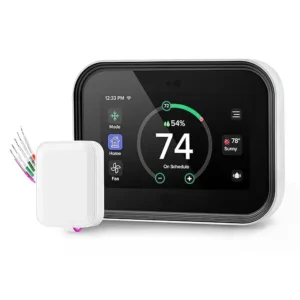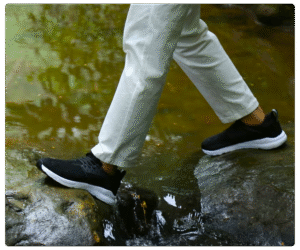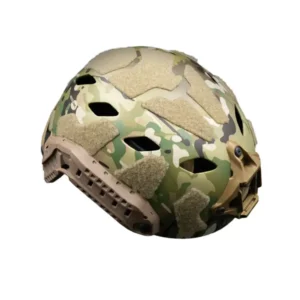For more than a century, the phrase “Form Follows Function” has shaped the way designers think about objects. But in 2025, this principle is undergoing a quiet revolution. Today’s most iconic products don’t just follow function, they embody it. The form isn’t an aesthetic layer placed on top of a mechanism. It is the mechanism. It’s the performance. It’s the emotion. It’s the solution.
This shift is the direct result of new materials, computational design, additive manufacturing, conscious sustainability, and a deeper understanding of human behavior. Instead of separating appearance from utility, modern designers treat them as a single organism, where shape, structure, material, and interaction merge into one cohesive idea.
So what does form as a function in industrial design look like in 2025?
To answer that, we’re exploring five standout products that reflect this evolution, designs where the form doesn’t merely support function but becomes the function itself. These examples illustrate how deeply industrial design has matured and how user-centric product design in 2025 is reshaping expectations in homes, workplaces, and the world at large.
Each example reveals a core truth: the most iconic industrial design is never decorative. It is intentional, inevitable, and profoundly human.
The 5 Examples of iconic designs
1. The Aura Smart Thermostat

Ambient Computing & Digital Wellness
The Product & The “Problem”
In a world drowning in screens, the Aura Smart Thermostat responds to a growing problem: digital fatigue. Homes in 2025 are overloaded with interfaces, panels, apps, dashboards, flashing indicators. Users want environmental control without visual clutter. Aura was created to be both discreet and intuitive, giving homeowners a way to manage indoor comfort without another screen demanding attention.
Deconstructing the Form
Aura is a seamless, translucent glass disc, almost jewel-like when unlit. With no visible buttons, edges, or seams, it feels more like a natural object than an electronic device. When inactive, it blends silently into any surface, appearing as a soft reflection of the wall behind it. When touched, a subtle backlight reveals contextual controls, flowing across the glass like breath on cold air.
It’s not a gadget on your wall, it’s an ambient presence.
How Form Is the Function
Aura’s disc-shaped, transparent form isn’t just a design choice, it’s the entire interface:
- The surface is the control system, responding to heat, pressure, and gesture.
- Transparency is the camouflage, solving digital overload by disappearing when not needed.
- Circular geometry enables radial interactions, such as swiping around the edge to adjust temperature.
- Light becomes the language, replacing text-heavy UI with pure visual feedback.
Here, form becomes the user experience, and the design itself reduces cognitive load, aligning perfectly with the principle of form-as-function industrial design.
Why It’s Iconic for 2025
Aura is the embodiment of two major trends:
- Ambient computing: Technology that retreats into the background until summoned.
- Digital wellness: Users are demanding less visual noise and more emotional calm.
In an era where devices compete for attention, Aura won by removing the competition.
2. The Loom Biodegradable Sneaker

Circular Economy & Bio-Integration
The Product & The “Problem”
Traditional shoes are environmental nightmares. They contain dozens of materials, toxic glues, and components that make them nearly impossible to recycle. With increasing pressure for sustainable product design, the industry needs alternatives that reduce waste and support regenerative ecosystems.
Enter the Loom Sneaker, designed to be born from nature and return to it.
Deconstructing the Form
Loom features a one-piece, 3D-knitted upper made from a proprietary algae-based polymer. The striking part is the woven lattice sole, which seamlessly merges with the upper. No adhesives. No stitching. No assembly.
The sneaker looks like it’s grown, not manufactured, more akin to organic architecture than footwear.
The open lattice isn’t merely visual flair; its structural rhythm evokes coral reefs and mycelium, living systems optimized for strength and airflow.
How Form Is the Function
Loom’s entire performance is encoded in its form:
- The lattice structure delivers targeted cushioning, flexing where needed.
- Breathability emerges naturally through the open geometry, eliminating the need for traditional ventilation panels.
- The single-piece design enables complete composability, because there are no foreign materials to remove.
- Material distribution follows biomechanical stresses, thanks to generative design.
The sneaker’s shape and structure are its function, support, cooling, sustainability, nothing added, nothing wasted.
Why It’s Iconic for 2025
Loom captures two defining 2025 movements:
- Circular design thinking, where products have clean beginnings and clean ends.
- Bio-integration, designing with materials that behave like living organisms.
It proves that sustainability isn’t an afterthought. It’s a design decision at the level of form itself.
3. The Flux Reconfigurable Desk Lamp

Tangible UX & Hyper-Personalization
The Product & The “Problem”
Most lamps lock users into fixed modes: reading light, task light, ambient glow. But humans don’t live in fixed modes. Workspaces constantly shift between focused tasks and relaxed thinking. The challenge for modern lighting is to adapt fluidly, without overwhelming users with settings, menus, or complicated controls.
Flux solves this by eliminating traditional interfaces entirely.
Deconstructing the Form
Flux resembles a minimalist, articulated spine made up of magnetic segments. Its sculptural silhouette allows it to stand, stretch, coil, or arch. There are no buttons, no switches, and no visible wiring. Every segment is a smart module containing LEDs and micro-magnets, allowing it to hold any shape you create.
The lamp looks like a living object, dynamic, flexible, expressive.
How Form Is the Function
Flux is the purest example of form-as-function industrial design:
- Shape is the control mechanism. Straighten for a bright, directional beam; curve for soft ambient light.
- Orientation determines brightness, using internal gyroscopic sensors.
- Segments regulate light diffusion, meaning the lamp’s physical geometry controls illumination style.
- No separate UI exists, the user’s hands are the interface.*
The lamp doesn’t have settings; it has behaviors, activated entirely by form.
Why It’s Iconic for 2025
Flux is emblematic of two major design shifts:
- Tangible user experience, where interaction becomes physical again.
- Hyper-personalization, allowing products to conform to the user, not the other way around.
In a time when interfaces are increasingly virtual, Flux brings interaction back into the real world with a playful, intuitive sensibility.
4. The Cirrus Personal Air Purifier

Wellness Integration & Domestic Harmony
The Product & The “Problem”
Air purifiers are essential, yet most are intrusive, noisy, boxy, covered in vents and aggressive graphics. They disrupt the calmness of a home. Cirrus was created as a response to an emerging expectation: products for wellness should look and feel like wellness.
Deconstructing the Form
Cirrus is a soft, textile-covered dome, almost like a piece of contemporary furniture. There are no visible fans or vents. Its rounded silhouette suggests gentleness and serenity, intentionally avoiding visual aggression. The exterior is made from a sound-dampening recycled fiber blend, giving it a plush, warm presence in any room.
How Form Is the Function
Cirrus’s dome isn’t decorative, it’s the heart of its purification system
- The curved geometry generates a natural laminar airflow, creating a clean “bubble zone” around the user.
- The fabric exterior absorbs and diffuses sound, reducing noise that typical purifiers amplify.
- The soft dome shape eliminates sharp airflow angles, allowing gentle, vortex-based circulation instead of fan blasts.
- The structure reduces mechanical strain, enabling longer life with fewer moving parts.
The more you examine it, the more obvious it becomes:
The dome shape is the purifier. The softness is the silence. The form is wellness.
Why It’s Iconic for 2025
Cirrus aligns perfectly with the global trend toward:
-
- Holistic domestic design, where tech integrates into the home’s emotional tone.
- Quiet wellness, prioritizing calm, comfort, and mental clarity.
In 2025, purification isn’t just about removing pollutants, it’s about creating spaces where the mind can rest.
5. The Eon Adaptive Bicycle Helmet

Micro-Mobility Safety & Material-Driven Innovation
The Product & The “Problem”
With micro-mobility surging in 2025, e-bikes, electric scooters, city commuter bicycles, one problem remains universal: safety gear hasn’t kept up with usage patterns. Traditional helmets are rigid, bulky, uncomfortable, and rely on a “one-size-fits-most” philosophy that rarely delivers a true fit. Poor fit leads to poor protection, and poor protection leads to avoidable injuries.
The Eon Adaptive Helmet was created to address this reality: to design a protective product where the form itself performs the safety function, instead of acting as a passive shell.
Deconstructing the Form
Eon features a 3D-printed exoshell made from a variable-density honeycomb structure. Viewed up close, the geometry looks like a living organism, interlocking cells of different sizes and thicknesses, forming a continuous surface that wraps naturally around the skull.
There is no foam liner, no multiple layers, no conventional hard plastic exterior. Instead, the entire helmet is a unified, organic geometry engineered for compression, airflow, and energy distribution.
The form instantly communicates its purpose: flexible where it must adapt, robust where it must protect.
How Form Is the Function
Eon is one of the clearest examples of form-as-function industrial design in 2025:
- Adaptive Fit Through Geometry
The honeycomb pattern varies in density across the helmet. Softer cells flex inward to conform to the rider’s head, while denser regions remain rigid for protection. The form adjusts itself, no mechanical fit system required. - Impact Absorption Built Into Shape
Instead of absorbing force with foam, the cells collapse in controlled patterns, channeling energy away from the skull. The collapse behavior is engineered into the geometry itself. - Airflow Without Vents
Traditional helmets carve vents into solid shells. Eon uses negative space within the honeycomb itself, allowing continuous airflow without weakening the structure. The form breathes naturally. - Lightweight by Design
The hollow-celled architecture removes unnecessary material, reducing weight while maximizing strength.
Every performance characteristic, fit, cooling, protection, comfort, comes directly from the shape. The helmet doesn’t have features. The form is the feature.
Why It’s Iconic for 2025
Eon captures the spirit of 2025 industrial design in three powerful ways:
- Material Intelligence
Designers are using computational geometry and 3D printing to create structures that outperform traditional materials. - Rise of Micro-Mobility
Urban users demand lighter, smarter, more comfortable personal safety gear. - Human-Centric Personalization
Instead of customizing a helmet through straps or pads, Eon adapts through its physical properties, meeting a key desire for frictionless personalization.
The Eon Adaptive Helmet shows how industrial design in 2025 is leaving behind “hardware as armor” and moving toward organic, intuitive protection that feels like an extension of the body.
Conclusion
The most iconic industrial designs of 2025 share a powerful truth: form isn’t just a vessel for function, it is the function. Whether it’s the lattice of a biodegradable sneaker or the dome of a silent purifier, physical design shapes performance, sustainability, usability, and emotion.
At Shark Group, this philosophy guides our product design and development in 2025. We believe that great products are not defined by how they look or how they work, but by how these elements merge into something intuitive and inevitable. For every partner we collaborate with, we strive to create objects where form and function are inseparable, where design choices solve real human needs with elegance and purpose.

